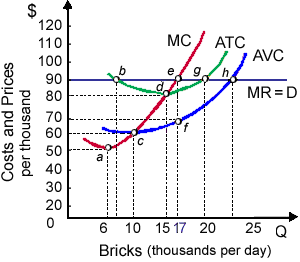Average variable costs per generic brick of this pure competitor equal approximately: (i) $.02 (2 cents per brick). (ii) $.04 (4 cents per brick). (iii) $.07 (7 cents per brick). (iv) $.09 (9 cents per brick).

Please choose the right answer from above...I want your suggestion for the same.